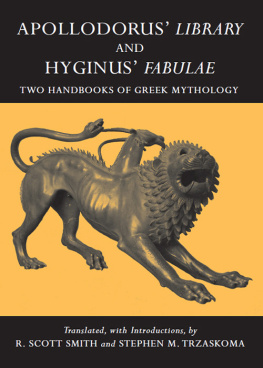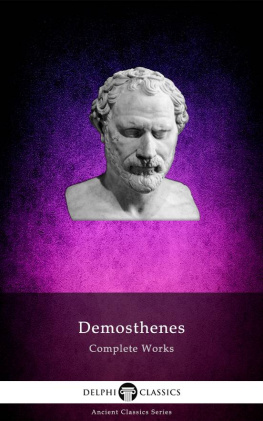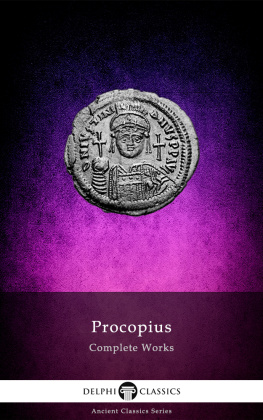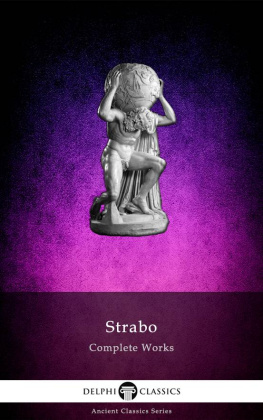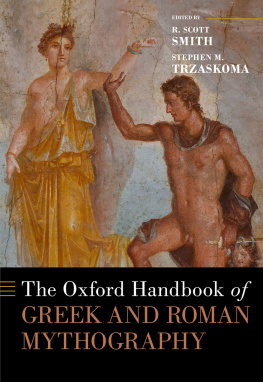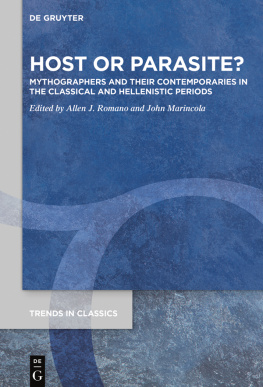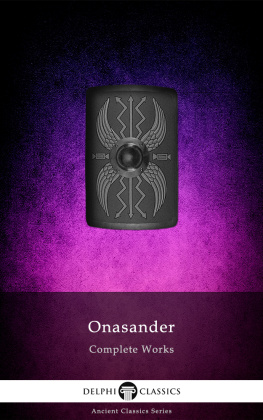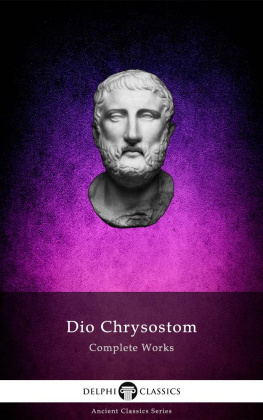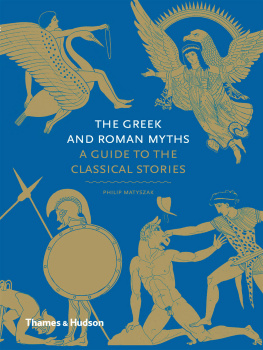Apollodorus Library
and
Hyginus Fabulae
Two Handbooks of Greek Mythology
Apollodorus Library
and
Hyginus Fabulae
Two Handbooks of Greek Mythology
Translated, with Introductions, by
R. Scott Smith and Stephen M. Trzaskoma
Hackett Publishing Company, Inc.
Indianapolis/Cambridge
Copyright 2007 by Hackett Publishing Company, Inc.
All rights reserved
Printed in the United States of America
10 09 08 2 3 4 5 6 7
For further information, please address
Hackett Publishing Company, Inc.
P. O. Box 44937
Indianapolis, IN 46244-0937
www.hackettpublishing.com
Cover design by Abigail Coyle
Interior design by Elizabeth Wilson
Composition by Agnews, Inc.
Printed at Edwards Brothers, Inc.
Library of Congress Cataloging-in-Publication Data
Apollodorus.
[Bibliotheca. English]
Apollodorus Library. And, Hyg inus Fabulae / translated, with introductions by R. Scott Smith and Stephen M. Trzaskoma.
p. cm.
Includes bibliographical references and indexes.
Two handbooks of Greek mythology.
ISBN-13: 978-0-87220-821-6 (cloth)
ISBN-13: 978-0-87220-820-9 (pbk.)
1. Mythology, GreekEarly works to 1800. I. Smith, R. Scott, 1971. II. Trzaskoma, Stephen M. III. Hyginus. Fabulae. English. IV. Title.
PA3870. A55A285 2007
292.13dc22
2006031184
ePub ISBN: 978-1-60384-866-4
G UILLELMO C ALDERO
QUI NOS MULTA ET VIR ET PER LIBROS ADHUC DOCET .
Apollodorus and Hyginus have both been translated into English before, but never in their entirety in the same volume. Their appearance here seemed a logical next step after we had already produced translations of the bulk of these two authors for the Anthology of Classical Myth (2004). That book was designed to bring as many interesting primary sources before new audiences as possible; this one is designed to make two of the most important of those sources even more accessible by providing up-to-date and high-quality translations in an inexpensive volume. The Bibliotheke (Library) and Fabulae (Myths) ought to be read more widely both by those with a general interest in the subject and students approaching it in an academic environment. The only other English translation of Hyginus Fabulae, that of Grant (1960), has some flaws and is out of print; that was our primary impetus. Apollodorus Bibliotheke, though already published in several translations, seemed a natural partner.
In our English translations we have aimed above all at accuracy and clarity, although accuracy and clarity must be qualified. In some places there are serious questions as to what the Greek and Latin of Apollodorus and Hyginus mean or imply, but we hope that we have not intentionally rendered anything perfectly intelligible into gibberish or made our authors say things they never wrote. Neither of the works in question is of interest for its literary qualities, and we have not attempted to transform them into something they are not. If the translations often reveal a certain awkwardness, one can be quite sure that it is representative of the general qualities of their originals.
To the translations themselves we have added a General Introduction that treats the wider context and development of mythography in some detail; those more interested only in issues specifically related to the authors at hand can turn directly to the introductions provided for each, which follow the General Introduction. All of the introductory matter is geared toward the general reader or student but, we trust, not so much so as to be entirely devoid of interest to specialists.
Footnotes have been designed to provide immediate clarification on content, but in the interest of space we have not included full mythological notesone can easily find full discussions of these myths in the many excellent handbooks available. To reduce the clutter of footnotes and cross-references, we have provided full indexes for the names, places, and authors cited, containing enough detail, we hope, to answer many questions that might occur to readers.
Technical and textual matters that will generally be of interest to a more limited audience have been relegated to endnotes (marked in the text by asterisks). In the Anthology of Classical Myth, where much of the translations originally appeared, we resolved to stick as closely to the texts printed in the scholarly editions on which the translations were based (Frazers for all of Apollodorus; Marshalls first edition for Hyginus). Here we felt no such compunction, but more than that, we keyed the first three books of Apollodorus to Wagners critical edition instead of Frazers Loeb (though the latter remains the basis for the combined texts of the epitomes of Apollodorus) and updated Hyginus to reflect Marshalls second edition. With the opportunity to comment more fully in our endnotes here, we freely consulted all available editions, not only accepting the conjectures of other scholars but also suggesting many of our own as we felt the need. In fact, we thoroughly revised our earlier translations and reconsidered the whole of both works, and there are as a consequence many deviations from our versions in the Anthology, most of them quite minor but several of great significanceall of them improvements, we hope. We have endeavored in the endnotes to document and provide rationale for every deviation from Wagner, Frazer, and Marshall, and we beg the indulgence of other scholars if we have missed any.
In terms of a division of responsibility, Trzaskoma translated Apollodorus, while Smith translated Hyginus, and we each provided the section of the Introduction devoted to our respective author. We carefully worked through each others translations and introductions, however, and the improvements of the nontranslating partner are present on every page. The General Introduction was initially written by Trzaskoma but thoroughly revised and expanded by Smith. The indexes were a joint project, as were the footnotes and endnotes (it should be noted, however, that wherever only one of us is responsible for a textual conjecture discussed in the endnotes, this is indicated by our initials).
Like all books, this one is a product of more than just the authors whose names appear on the cover, and there are many people whom we must thank for their support, wisdom, and help during its preparation. In particular, we would like to thank Stephen Brunet, our colleague and collaborator in Anthology of Classical Myth, for his collegiality and useful discussions. Likewise, we extend our gratitude to our editor at Hackett Publishing Company, Rick Todhunter, who encouraged the project, and to the production staff that shepherded it to fruition. We would also like to thank Michelle Cain, the publishers copyeditor, whose diligence saved us from many errors and inconsistencies. We should like to extend our gratitude to William Nelson, whose attractive and accurate maps add great value to the volume. Also thanks are due to the two anonymous readers, whose comments improved the Introductions.
The Deans Office of the College of Liberal Arts at the University of New Hampshire generously provided funding to each of us in support of this project, as did the universitys Center for Humanities and the Department of Languages, Literatures, and Cultures. The Graduate College of the University of New Hampshire facilitated much of the initial work on Hyginus with the award of a summer fellowship to Smith in 2005. In August, 2005 the Fondation Hardt pour ltude de lantiquit classique in Vandoeuvres, Switzerland, allowed us to work for a worry-free three weeks in an excellent library surrounded by brilliant and stimulating international colleagues. Our visit there was subsidized by the William A. Oldfather Research Fund at the University of Illinois at Urbana-Champaign. Without this financial support the volume would not have been possible. Likewise, without the timeliness and efficiency of the Interlibrary Loan Office of the Dimond Library, this project might have languished interminably.

